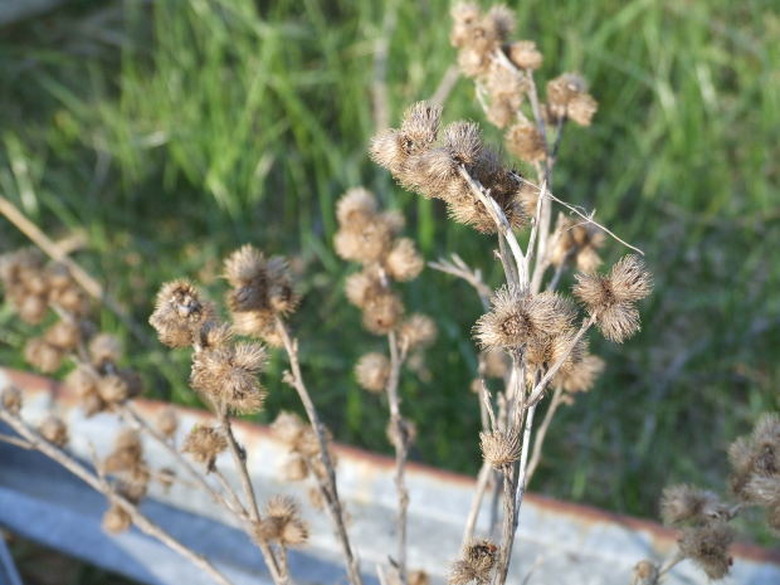How To Get Rid Of Burdocks
Anyone who owns a dog that has gotten into burdocks already knows the pain these lowly weeds growing on your property can bring. These aggressive weeds grow to heights of 4 feet or more and produce an abundance of burrs that cling to anyone and anything that crosses their path. Getting rid of burdocks requires patience and work, but the result is well worth the time invested.
Step 1
Pull burdocks in early spring while the soil is wet. Although some will resist your efforts, most will pull free with the long taproot attached. Dig with a spade to remove any roots that break or resist your efforts. Without the taproot, the burdock will not return. Failure to pull the taproots in spring results in new plants growing from the old root.
- Anyone who owns a dog that has gotten into burdocks already knows the pain these lowly weeds growing on your property can bring.
- Failure to pull the taproots in spring results in new plants growing from the old root.
Step 2
Pour white distilled vinegar on young burdock leaves as soon as they appear. Soak the entire leaves and allow vinegar to saturate the root. Fill a spray bottle with vinegar to get those hard-to-reach areas. Within a day or two, the leaves will die and turn brown. Pull the leaves and as much of the root as possible.
Step 3
In areas where the roots are inaccessible, keeping the leaves cut might be the only choice. Mow or cut any new leaves that sprout to prevent plants from growing. Eventually, the plants will die if leaves are removed regularly.
- Pour white distilled vinegar on young burdock leaves as soon as they appear.
- Eventually, the plants will die if leaves are removed regularly.
Step 4
Check the area often for any signs of new growth and apply vinegar or cut away the leaves immediately.
Rid Of Burdocks
Burdocks may be impressive plants that are virtually indestructible, but they are one plant you don't want in your yard. These big, boisterous plants grow quickly and sport hundreds of burrs that will stick to pets and children alike. Grasp the base of the leaves and pull with a even, firm pressure. If you break the root, you will need to work harder to remove it. Dig along both side of the root with a spade. Be sure you dig deeply enough to get the whole root. Pour undiluted distilled white vinegar on the base of the burdock plant. Let the plant sit for 2 days. The stems to the leaves will be soft and begin to turn brown. Grasp the leaves and pull any roots you can. Repeat the application of vinegar if the root sprouts new leaves. Keep burdocks cut back to the base of the plant. The use of a weed whacker on a weekly basis will keep them under control. Eventually the burdock root will die off without leaves to provide it with the nutrition it needs to grow.
- Check the area often for any signs of new growth and apply vinegar or cut away the leaves immediately.
Things Needed
- White distilled vinegar
- Spray bottle (optional)
- Garden clippers
- Mower
- Garden fork or spade
